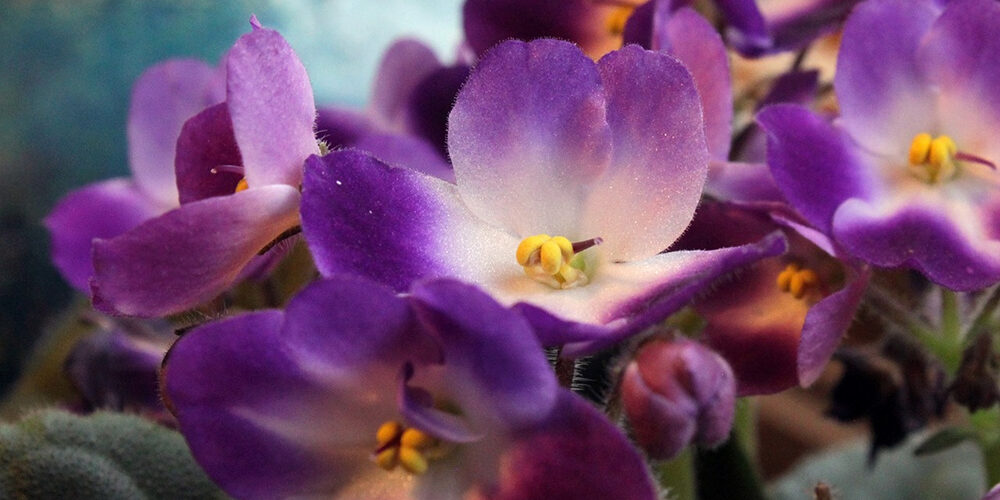Growing African Violets
Posted On April 2, 2020

African violets are small houseplants that produce clusters of white, blue, or purple flowers over fuzzy leaves.
African violets will bloom with lower light, though medium to bright indirect light is best.
Planting
How to plant African violets
- You can use an actual African violet potting mix or an all-purpose potting soil.
- Keep them planted in small pots and re-pot once a year to mix in fresh soil.
- The soil should be loose and well-drained, and high organic matter content is beneficial.
Care
How to care for African violets
- Keep the soil lightly moist and use room-temperature water.
- Leaves are susceptible to rot if kept in high humidity, so water African violets from the bottom to avoid getting excess water on the leaves.
- Dust dirt off the leaves with a small, soft brush.
- Fertilize every 2 weeks with a high phosphorous plant food, but only during the active growing season (spring and summer). Only start to fertilize when the plant appears to need an extra boost. Over-fertilizing is a more common problem than under-fertilizing.
- Many varieties prefer warm conditions (65°F / 18°C or warmer) though some can tolerate cooler conditions. Keep away from drafty windows in winter.
- Thin, dark green leaves and leggy stems tell you that the plant is getting too little light; light green or bleached leaves indicate too much light.
- Plants should be shifted to larger pots as they grow, but keeping African violets slightly root-bound can encourage them to bloom. The optimal time for repotting is after some leaves have wilted a bit.
Pests/Diseases
- Cyclamen mites can occur. They are nearly impossible to remove completely, so disposal of the infected plant and isolation of nearby plants is recommended.
- Powdery Mildew
- Various forms of rot and blight
Recommended varieties
There are hundreds of varieties and hybrids, from miniature violets to trailing varieties! They differ mainly in the colors of their flowers, which range from white to purple, though some varieties have variegation in their foliage and flowers as well.
African violets are typically classified by size, based on how wide they grow:
- Miniature: less than 8 inches across
- Standard: 8–16 inches across
- Large: more than 16 inches across
Website: www.almanac.com